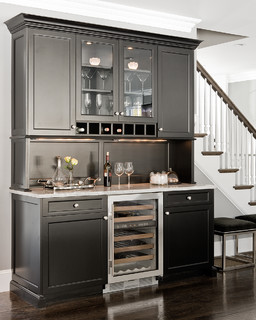I’ve always admired the natural beauty of wood countertops
in kitchen design, so when Joshua Johnson, president of artisan-crafted J. Aaron, LLC, custom wood top makers and a talented design blogger, too, offered a guest
post on the topic, I readily said yes.
Here are his insights on why to select wood for your counters, which
species to consider (including some you may never have heard of before!) and
caring for one of these beauties in your own home.
***
Why wood
Wood countertops beautifully fuse with today’s cabinetry, custom-designed the old-fashioned way with patience, dexterity and a keen eye for design. Wood countertops are adaptable to suit just about any style preference – from rustic to contemporary to traditional elegance.
They
can also be a sustainable choice. When
you use wood materials harvested from responsibly-managed forests and rapidly
replenished, as opposed to natural stone, which takes far longer to replace,
you ensure the sustainability of our planet.
Species
specifics
J.
Aaron’s top selling wood species are walnut, iroko, sapele and hickory. They are all hardwoods, but each have characteristics that set one apart
from the other.
The Janka Hardness Test rates a wood’s resistance to impact by dropping a .44 inch-steel ball on the wood from a consistent height, then measuring the depth of the dent created. Harder woods are less prone to denting but all woods will receive their fair share of dings over time… This only adds to their character.
The Janka Hardness Test rates a wood’s resistance to impact by dropping a .44 inch-steel ball on the wood from a consistent height, then measuring the depth of the dent created. Harder woods are less prone to denting but all woods will receive their fair share of dings over time… This only adds to their character.
- Walnut is a beautiful, naturally dark hardwood indigenous to North America. The color tends to stay constant throughout the life of the top with a little darkening over time though use and oxidation. On the janka hardness scale it’s rated at 1010 putting it in the lower end of the hardwoods as far as impact resistance. Typical cost for walnut is around $90-$110 per SF.
- Iroko comes from Africa and is considered an exotic hardwood. It starts out bright yellow but, through oxidation and UV exposure, darkens several shades to become a wonderful golden brown. Its janka score is a 1260 making it a little bit harder than walnut. This is a good wood to use on an outdoor kitchen because it has the same characteristics as teak and is often referred to as African teak. Typical cost for iroko is $100-$110 per SF.
 |
| Iroko top |
- Sapele is today's mahogany, now that mahogany has been made illegal in the US and many industrialized countries. It has a very similar look in both color and grain pattern. This African native is a wonderful wood to work with, being fine grained and a very stable consistent wood. The color will darken a bit with time so expect that a new countertop will not match an older sample. Its janka score is 1500, a relatively high score. Typical cost is $90-$100 per SF.
 |
| Sapele top |
- Hickory, the American classic, has a janka score of 1820 putting it quite high on the score board. An ideal choice for truly heavy use chopping blocks. It is a domestic hardwood and readily available. The color is constant but it’s not consistent. In any one board there are dramatic shifts between blond and brown. This color shift produces a beautiful top with lots of variation. Typical cost is $70-$85 per SF.
Wood care
We recommend frequent standard surface sealing with mineral oil and occasional sanding to smooth scratches. Most homeowners find the occasional nick or cut the most charming part of their countertops, using it in place of a cutting board to give it that one-of-a-kind character.
J.
Aaron provides and recommends any one of three wood countertop sealants:
- Standard conversion varnish sealer for a long-lasting,
scratch-resistant finish;
- Tung oil sealer for a soft, natural look;
- 100 percent food-safe mineral or butcher block oil.
J. Aaron is a family-owned business in Scottsdale, Ga.
that has been making custom wood countertops for homes and businesses since
2001.
PHOTOS: All photos are credited to J. Aaron.





















